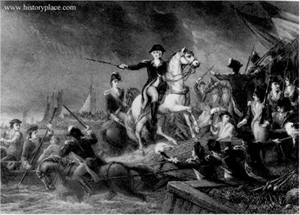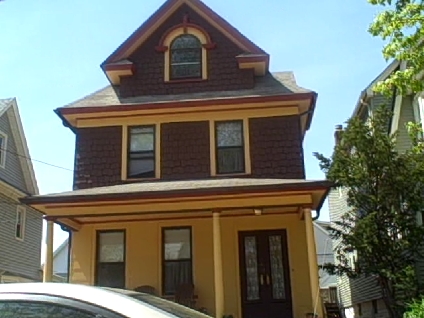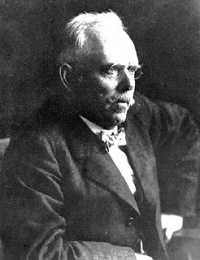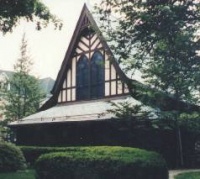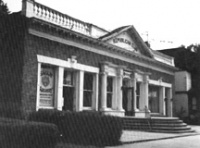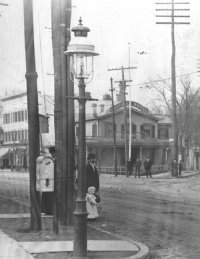Views
Contents |
Contents
- About
- A Brief History
- Famous Places and People
- Residential Patterns and Immigrant Residential Patterns
- What the Locals Say...
About
Richmond Hill is a residential community in Southwestern Queens. It is bounded by Jamaica to the East, Ozone Park to the South, Woodhaven to the West, and Kew Gardens to the North.
View RH in a larger map
Richmond Hill has a large variety of nationalities, among the largest are Hispanics, native White Americans, including those of Irish, Italian, and German descent, and Guyanese, and Trini immigrants and second generation families. A full 60% of residents in Richmond Hill are foreign born. It is a middle class neighborhood with primarily one and two family homes. Some houses date back to the late nineteenth century. Most have been remodeled or rebuilt. Richmond Hill is served by the J and Z trains that run on Jamaica Avenue, and the Q37, Q24, Q56, and Q10 bus lines that run along 111 Street, Atlantic Avenue, Jamaica Avenue, and Lefferts Boulevard respectively. The majority of residents own their homes, though a large percent rent. The median household income in 1999 was around $40,000(not adjusted for inflation). Richmond Hill has one public High School, and four elementary schools. A full 68% of its residents have a high school diploma or higher.[1]
A Brief History
The area known as Richmond Hill was originally inhabited by Native Americans known as the Rockaway Indians. They formed major trails that European settlers used as roads. One of the major trails is used today as Jamaica Avenue/Fulton Street and runs from the waterfront in Brooklyn throughout Queens. English settlers bought land from the Rockaway Indians and settled farms, yet the area did not become a town. During the Revolutionary War, Washington's troops were defeated in the famous Battle of Long Island. This battle took place in Forest Park, the northern border of Richmond Hill. The English occupied Long Island until the end of the war.[2]
Richmond Hill became a small town. The farms that made up the area were divided into healthy lots that were sold to affluent families that lived in Manhattan. Richmond Hill was designed to be an escape into the country. During its first years, it was just that. Wealthy professionals bought summer homes in Richmond Hill. These homes were mansions by today's standards. They were designed in the Queen Anne Victorian architecture. Such features of these homes include a widow's walk, bay windows, and turret-style roofs. Trees were planted in front of every house on every street.[4]
With the construction of institutions like the Church of the Resurrection, the Post Office, and the Triangle Hofrbrau, Richmond Hill became a town for permanent residence.
Famous Places and People
The famous journalist resided in Richmond Hill on 120th street. There he wrote many of his famous works includingHow The Other Half Lives. Though an immigrant himself, he held many prejudices against ethnic immigrant and women. Nevertheless he was a ruthless journalist who sought justice in the form of proper and sanitary housing. Living in Richmond Hill he was able to work piecefully on his books and articles. He also became a good friend of Theodore Roosevelt, who like him spoke of reform. Theodore Roosevelt attended the wedding of Riis' daughter at the Church of the Resurrection.[5]
Church of the Resurrection The Church of the Resurrection was the first church built in Richmond Hill. It was a Protestant Episcopal church and completed late 1874. The land for the Church was donated by Albon P. Man. The Church offered not only a place of worship for the people of Richmond Hill, but it also allowed residents to live there permanently as it was a sign of the town becoming a residential neighborhood rather than a summer retreat. The Church of the Resurrection is located on 118th Street formerly known as Church Avenue. For years, the Church of the Resurrection has offered residents of Richmond Hill a religious community.[6]
The Hofbrau was a hotel that was opened in the early 1870s. It was located on Myrtle and Jamaica Avenues. Originally the Hofbrau, served as a hotel for travellers passing through Richmond Hill, the Post Office, and the town center. Dances were held in the restaurant section of the Hofbrau where travelers and residents would mingle. Once the Post Office was relocated, the Hofbrau still remained famous. The restaurant remained successful throughout the twentieth century. In 1999, the restaurant was sold due to a decline in business, but the building still remains to this day. Now it is a dental facility for the community.[7]
The Richmond Hill Republican Club
The building that was the Richmond Hill Republican club still exists and is preserved. It featured a telephone booth, tin ceiling, a main room, bar, a club house, and oak pews. The club represents an era in New York politics when "everyone was a Republican". Famed politicians Theodore Roosevelt, Calvin Coolidge, and Warren Harding were all received at the Republican club.[8]
Residential Patterns and Immigrant Residential Patterns
During its early years Richmond Hill's population was largely German descendants. These residents made their impact in Richmond Hill. There were many shops and institutions that catered to them including the Church of the Resurrection. Grocery stores sold German delicacies and the Triangle Hofbrau Hotel contained a popular German restaurant. Richmond Hill was developed first in the areas north of Jamaica Avenue. There were some houses built south of Jamaica Avenue during Richmond Hill's earlier years, but for the most part residents settled north of the avenue in close proximity to the park. This was considered the prime area of Richmond Hill because the golf course was located in Forest Park. As Richmond Hill developed, and more people came to live in Richmond Hill, the less affluent moved into units that were closer to or south of Jamaica Avenue. By the early twentieth century the borders of Richmond Hill were filled out. Then the population was divided between German and Irish descendants.
During the early-middle, twentieth century, Richmond Hill experienced a growth in both Italian and Russian families. These new residents settled south of Jamaica Avenue- the Italians to the West, the Russians to the East. The newcomers to Richmond Hill were not immigrants, but middle class descendants of their immigrant parents. They enjoyed Richmond Hill as a safe haven in a large city and dominated Richmond Hill in terms of numbers. Richmond Hill experienced two influxes of population growth. The first was after the construction of the elevated train along Jamaica Avenue, after World War I. The second was a result of population growth after World War II. It was during this time that apartment buildings were built in Richmond Hill. These buildings are located along Park Lane South and Myrtle Avenue and 109 Street. Despite some construction on apartment buildings Richmond Hill's housing remained primarily single-family homes. Richmond Hill's population grew steadily. It offered a modest middle class living to many.
Starting in the 1980s, Richmond Hill's demographic began to change. The relaxation of immigration laws, the opening of sending countries of immigrants, and the rebound of the housing market from the recession of the 1970s made Richmond Hill an ideal place for working class immigrants. Hispanic immigrants from South America and the Carribean, Guyanese and Trinidanians, and other groups began to move to Richmond Hill. By 2000, twenty years later, the largest racial group in Richmond Hill was Hispanics, with about 40 percent of the population. In the 1980s, native whites -those of German, Italian, Irish, and Russian, and Eastern European descent- dominated the population with a full 90%. In 1990, that number dropped to 60%. By 2000, it was at 30%. The fleeting white population has shifted in Richmond Hill. The houses north of Jamaica Avenue became home to the more recent white population in Richmond Hill. The German and Irish populations dwindled. They were replaced by mostly Italian and Russian families. Now the bulk of the Italian, Russian, and European white populations are located north of Jamaica Avenue. The hispanic and West Indian population of Richmond Hill began to populate the areas south of Jamaica Avenue. Many of these new citizens of Richmond Hill are first generation immigrants. The West Indians in particular have the highest rate of being first generation. Many come to Richmond Hill as an extended family and will pool money to buy a house, demolish it, and then rebuild it so that a unit that once housed one family, now houses three or four. A full 60% of Richmond Hill's population are immigrants from another country. These new immigrants tend to mingle with each other. A drive down Jamaica Avenue will attest to that. On a single block one can find a Hispanic corner store, an Italian flower shop, a West Indian hardware store, and a Russian repair shop. (108th Street and Jamaica Avenue)[9]
What the Locals Say...
Michael T. -104 Street, life long Richmond Hill resident, 19
When did your family come to Richmond Hill?
"My grandfather bought the house on 104th Street in like the 1950s and my father lived in it and now I live in it."
How has Richmond Hill Changed?
"It used to be only white people. By the time I got to RHHS[Richmond Hill High School], it was bad and crowded, but most people who go there don't even live in Richmond Hill. I don't really care though its not like its super hood here. People try and act like its ghetto, but its really not."
Anonymous-105 Street, first generation immigrant homeowner, 39
Where, why, and how did you end up in Richmond Hill?
"When I first came here I was 13 and living and working with my older sister so we could bring my brothers over. I met my husband in college and when we decided to buy house we found openings that were affordable here. There's a Catholic Church and school nearby so we bought a house. It was really cause it was so affordable, unlike Manhattan."
How was it then?
"It was hard. We had to rent the downstairs of the house. It was on 104th Street and for years a lot of money was going out. After a while at our jobs we got the hang of it and then ***** got a promotion. We decided to move here (house north of Jamaica Avenue 105th Street) and rent the other house out. We have income from three different renters."
Anonymous-104 Street, second generation lived in Richmond Hill, relocated to Rego Park, 27
Why did you leave Richmond Hill?
"The rent here is only 250 and I get a house. Honestly, I would have rather stayed closer cause my fams is there. On 104 I was paying 600 a month for an apartment. I'm gonna move back though, live with my family so I can finish college."
If you had the money to live in Richmond Hill, would you?
"Seriously the houses on like 105 are huge. I would buy one if I could, but they're like half a mil. Besides its not like I have kids."
Do you miss Richmond Hill?
"Naw not really. Its too old for me. Its for like settling down and buying a house. I aint ready yet. I mean its really nice and clean and one day I do want a house. I dont know if I want it there though. The only good thing is that no one really knows about it so its not overly popular and expensive, like Austin Street or something. My friends who have never been there say its really really nice."[10]
References
- ↑ http://www.zipskinny.com/index.php?zip=11418
- ↑ http://www.richmondhillhistory.org/indians.html
- ↑ http://www.richmondhillhistory.org/man.html
- ↑ http://architecture.about.com/cs/housestyles/a/queenanne.htm
- ↑ http://www.richmondhillhistory.org/jriis.html
- ↑ http://www.richmondhillhistory.org/Resurrection.shtml
- ↑ http://www.richmondhillhistory.org/rhplaces.html
- ↑ http://www.richmondhillhistory.org/rhplaces.html
- ↑ http://www.socialexplorer.com/pub/ReportData/htmlresults.aspx?ReportId=R4344200&TablesPerPage=50&Page=3
- ↑ Taken from interviews with one Italian resident, one Ecuadorian resident, one Puerto Rican resident. Interviews were conducted April 8-20, 2009
